Youth Homelessness in Canada: Housing as a Fundamental Right for All
Homelessness is a pervasive issue that affects individuals across various demographics in Canada. However, among those most vulnerable are young people, particularly those from LGBTQ+ and Indigenous communities. These groups face higher risks and greater challenges when it comes to securing stable housing. Recognizing housing as a fundamental human right is essential for addressing these disparities and ensuring that every individual, regardless of their identity, has a safe place to call home.
The Scope of Youth Homelessness in Canada
Youth homelessness in Canada is a significant and growing crisis. According to estimates, on any given night, more than 6,000 young people experience homelessness across the country. Over the course of a year, this number expands to approximately 35,000. Young people become homeless for various reasons, including family conflict, poverty, and systemic barriers. For many, the lack of a stable home disrupts their education, employment prospects, and overall well-being, creating a cycle that can be difficult to escape.
LGBTQ+ Youth and Homelessness
LGBTQ+ youth are disproportionately affected by homelessness in Canada. A 2020 study by the Canadian Observatory on Homelessness revealed that LGBTQ+ youth make up about 25-40% of the homeless youth population, despite constituting only a small fraction of the general youth population. The primary drivers behind this disparity include family rejection, discrimination, and a lack of supportive services tailored to their needs.
Family rejection is a particularly acute issue. Many LGBTQ+ youth are forced out of their homes due to a lack of acceptance from their families regarding their sexual orientation or gender identity. This rejection not only leaves them without shelter but also exposes them to heightened risks of violence, abuse, and exploitation. Furthermore, LGBTQ+ youth face significant mental health challenges; studies indicate they are more likely to suffer from depression, anxiety, and suicidal ideation than their non-LGBTQ+ peers.
Indigenous Youth and Homelessness
Indigenous youth in Canada are another group that experiences disproportionately high rates of homelessness. The effects of colonialism, including residential schools, systemic racism, and intergenerational trauma, have significantly contributed to this crisis. Indigenous youth represent a staggering percentage of the homeless population in Canada, often estimated at over 50% in urban areas, despite constituting less than 8% of the total youth population.
The barriers to housing for Indigenous youth are multifaceted. Many come from communities that face severe economic challenges and lack adequate housing resources. In urban settings, they encounter systemic discrimination and barriers to accessing services. The ongoing impacts of colonial policies have left many Indigenous families and communities struggling to maintain stable housing, perpetuating cycles of poverty and homelessness.
Housing as a Fundamental Right
Housing is universally recognized as a fundamental human right, essential for the dignity, health, and well-being of individuals. The Universal Declaration of Human Rights (UDHR), adopted by the United Nations in 1948. It states that "everyone has the right to a standard of living adequate for the health and well-being of themselves and of their family, including food, clothing, housing, and medical care."
For young people, stable housing is critical to their development and future opportunities. It provides a foundation from which they can pursue education, secure employment, and build meaningful lives. Without stable housing, youth are at a greater risk of experiencing poverty, poor health outcomes, and limited life prospects. For LGBTQ+ and Indigenous youth, who already face heightened vulnerabilities, ensuring access to safe and supportive housing is particularly urgent.
Addressing the Crisis
Addressing youth homelessness in Canada, especially among LGBTQ+ and Indigenous populations, requires a comprehensive and multifaceted approach. This approach must encompass preventive measures, inclusive policies, community engagement, and legislative action.
Preventive Measures
Preventive measures are crucial in mitigating the risk of homelessness among at-risk youth. These include programs that offer support to families to prevent conflict and breakdown, particularly for LGBTQ+ youth. Community-based interventions that provide early support and resources can significantly reduce the likelihood of youth becoming homeless.
Inclusive Policies
Housing policies must be inclusive and designed to address the specific needs of LGBTQ+ and Indigenous youth. This involves ensuring that shelters and affordable housing options are safe, welcoming, and supportive for these populations. It also means addressing the systemic barriers that prevent access to housing and services, such as discrimination and lack of culturally relevant resources.
Community Engagement
Effective solutions to youth homelessness require the engagement and involvement of the communities affected. Indigenous and LGBTQ+ communities should be directly involved in the development and implementation of housing strategies. This ensures that the policies and programs are not only inclusive but also culturally sensitive and relevant to the needs of those they aim to support.
Legislative Action
Governments at all levels must take legislative action to protect the right to housing and combat discrimination in housing practices. This includes enforcing laws that prevent discrimination based on sexual orientation, gender identity, or Indigenous status and ensuring that housing policies are aligned with the principles of equity and human rights.
Conclusion
The crisis of youth homelessness in Canada, particularly among LGBTQ+ and Indigenous communities, underscores the urgent need to recognize and uphold housing as a fundamental right for all. By adopting comprehensive strategies that include preventive measures, inclusive policies, community engagement, and legislative action, we can work towards a future where every young person has access to safe and stable housing. Ensuring housing for all is not just a matter of necessity but a reflection of our commitment to dignity, equity, and justice for every individual in our society.
References
Canadian Observatory on Homelessness. (2020). Homelessness in Canada: Youth. Retrieved from Homeless Hub.
Abramovich, A., & Shelton, J. (Eds.). (2017). Where Am I Going to Go? Intersectional Approaches to Ending LGBTQ2S Youth Homelessness in Canada & the US. Canadian Observatory on Homelessness Press.
Patrick, C. (2014). Aboriginal Homelessness in Canada: A Literature Review. Canadian Homelessness Research Network Press.
United Nations. (1948). Universal Declaration of Human Rights. Retrieved from UN.

